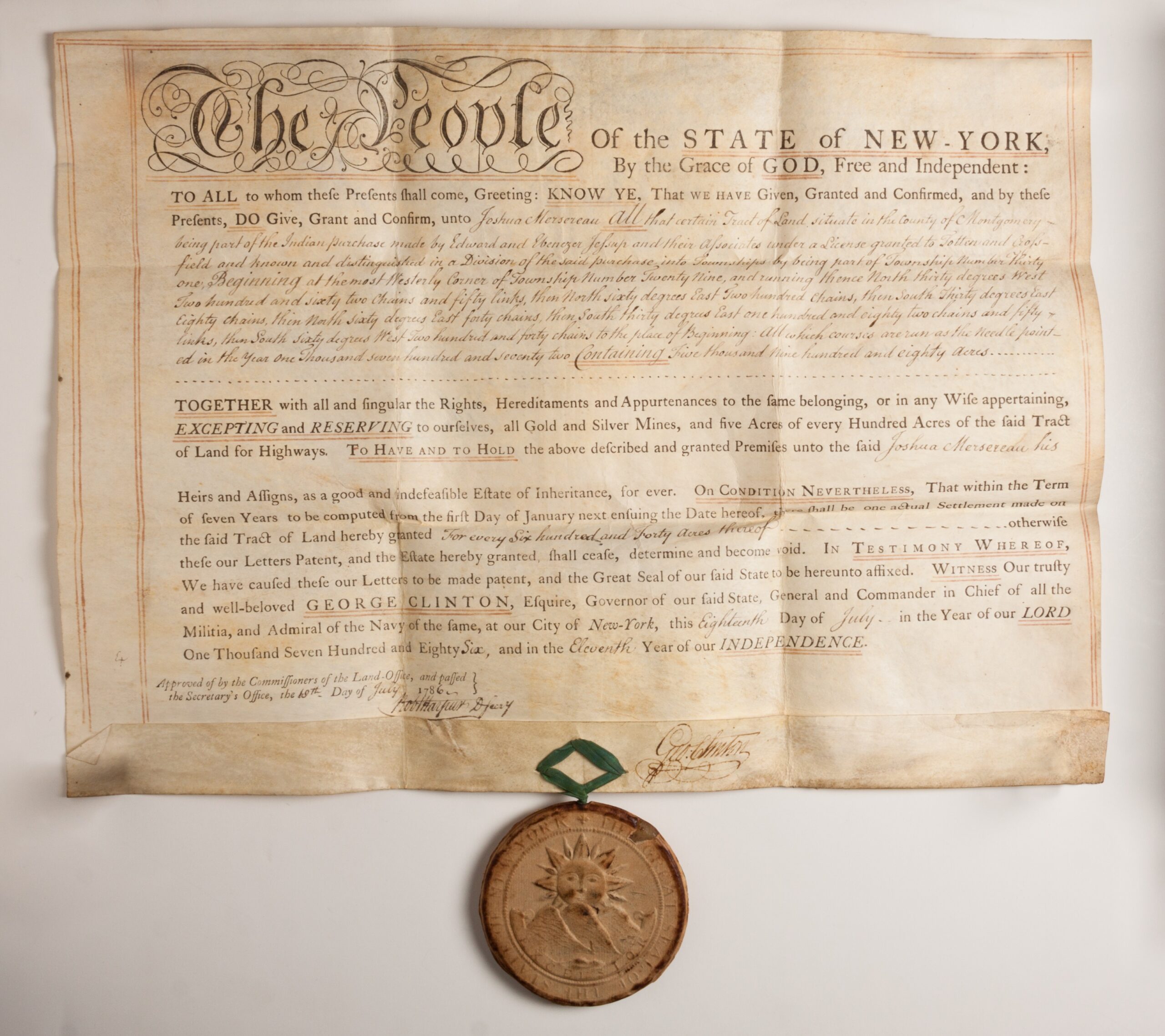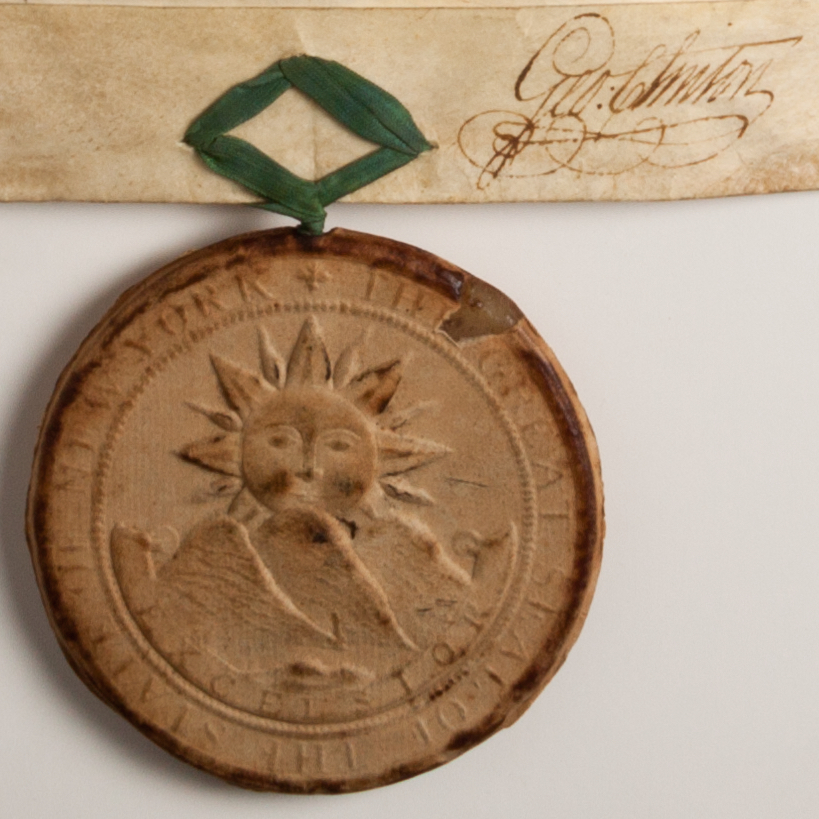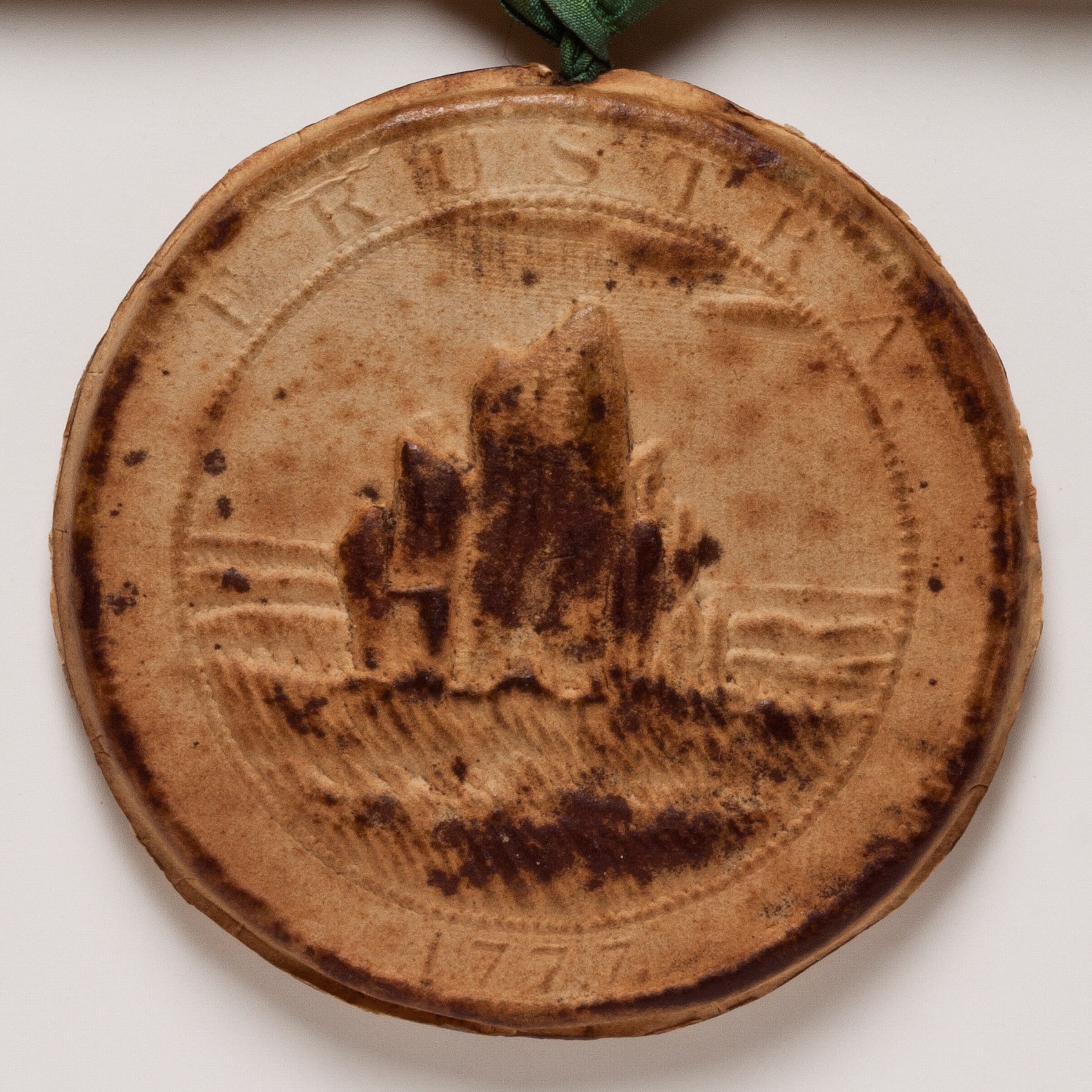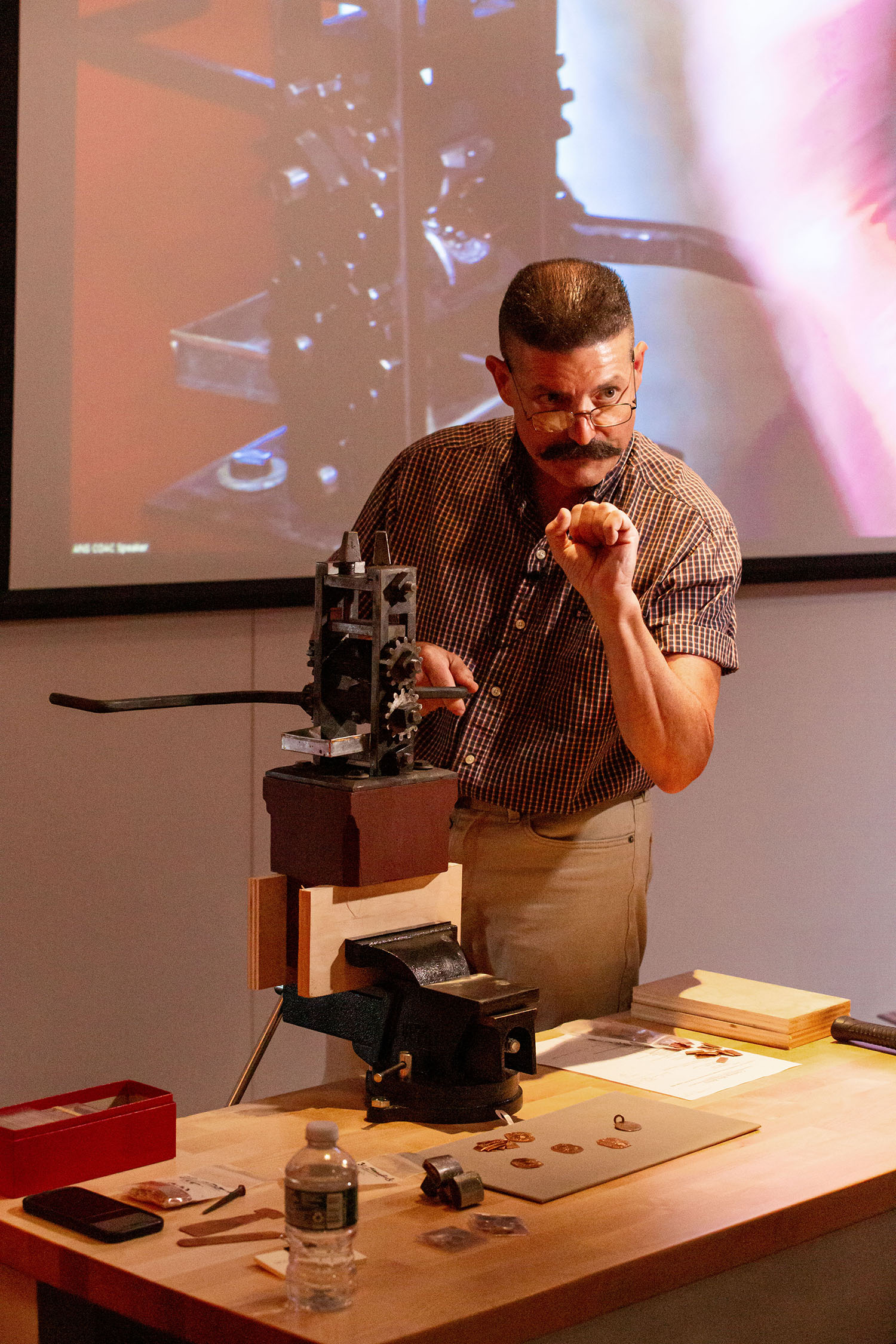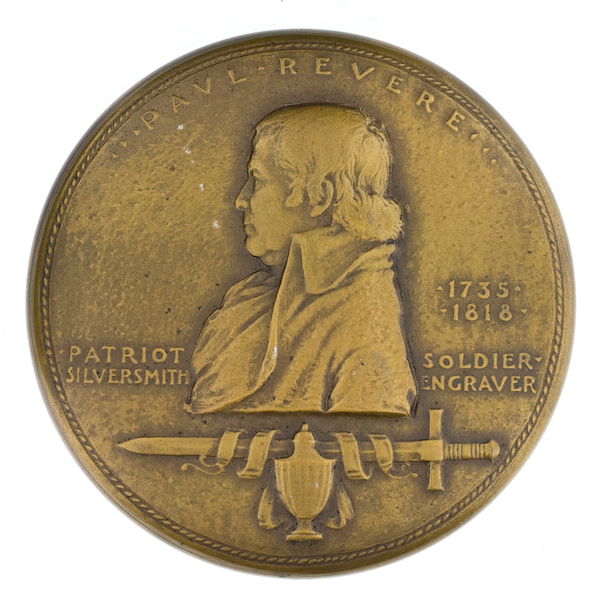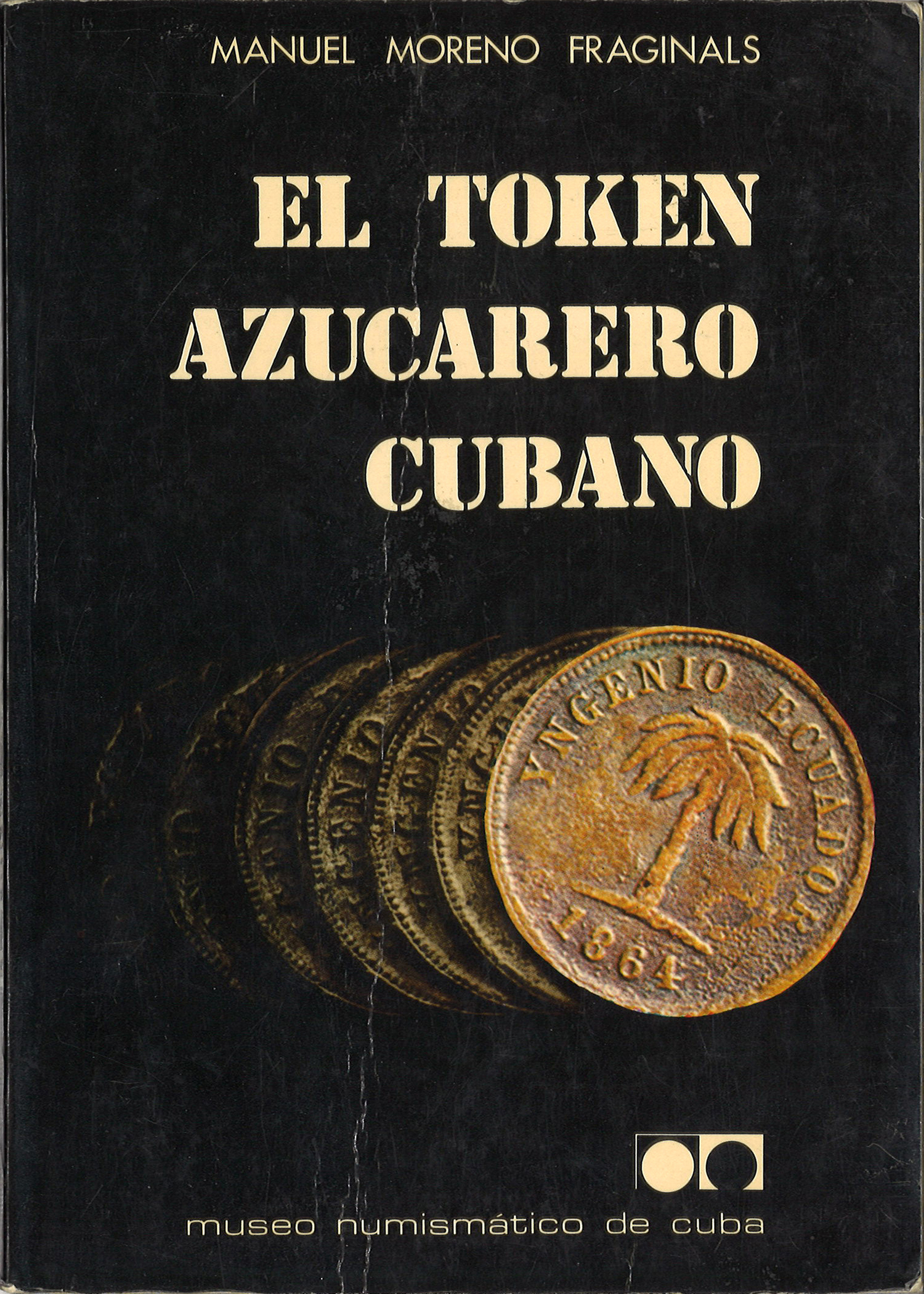New-York Letters Patent and Seal, 1786
One of the more fascinating documents among the Society’s collections is a so-called ‘letters patent’ dated July 10, 1786, which granted Joshua Mersereau title to fifty-nine hundred acres of land that now comprises an area around the town of Wells, New York. A letters patent was a legal instrument that functioned as both a public record and personal certificate of a given order, which in this case was a land deed. In line with its official and public purpose, a large pendent seal was affixed by the Governor’s office, which was vested with the authority to press the parchment-encased wax seals of the State of New York that validated documents. These documents were important because ownership of what were then considered the “wild lands” of New York north of Albany was clouded by decades of malfeasance by land speculators and contestations from the mix of Indians and illicit settlers who actually inhabited the land.
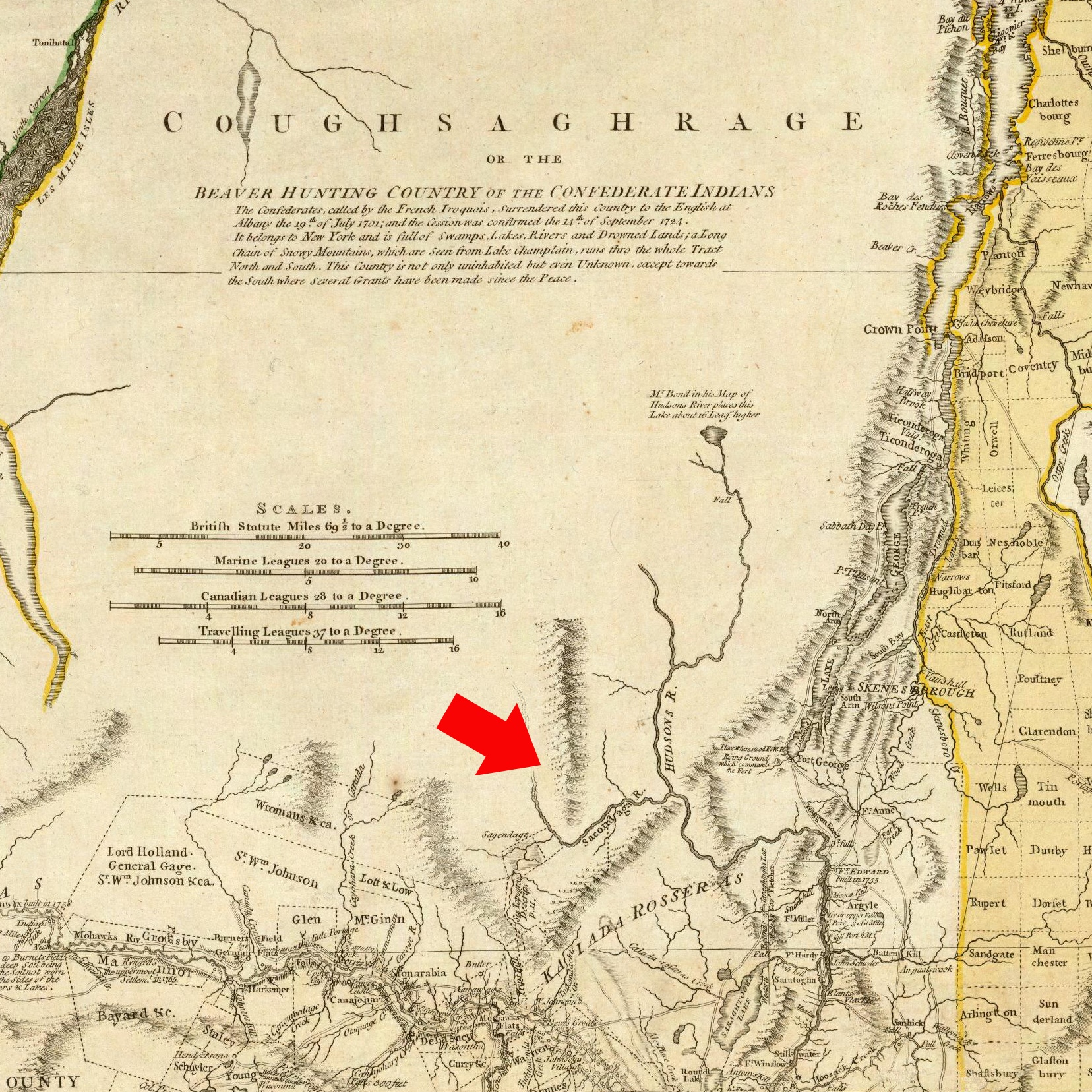
David Rumsey Maps
Following the French and Indian War, there was a speculative land rush to secure title to areas located east of the Royal Proclamation of 1763, which attempted to restrict settlement beyond the Appalachian Mountains. As the map indicates, the vast swath of country northwest of Albany was deemed English by dubious virtue of the Nanfan Treaty (1701). The map above refers to this area as ‘Coughsaghrage’ or the ‘Beaver Hunting Country’ of the Iroquois, but this did not stop the colonial administration from selling off large tracts of land to connected insiders. If you click to enlarge the map above you will be able to see the names of assorted colonial officials and merchants, most prominently Sir William Johnson, inscribed within the lands they held title to. The red arrow points to the approximate position of the nine square mile area just to the east of the Sacadanga River that Mersereau acquired, which was itself a tiny fraction of the infamous Totten and Crossfield Purchase.
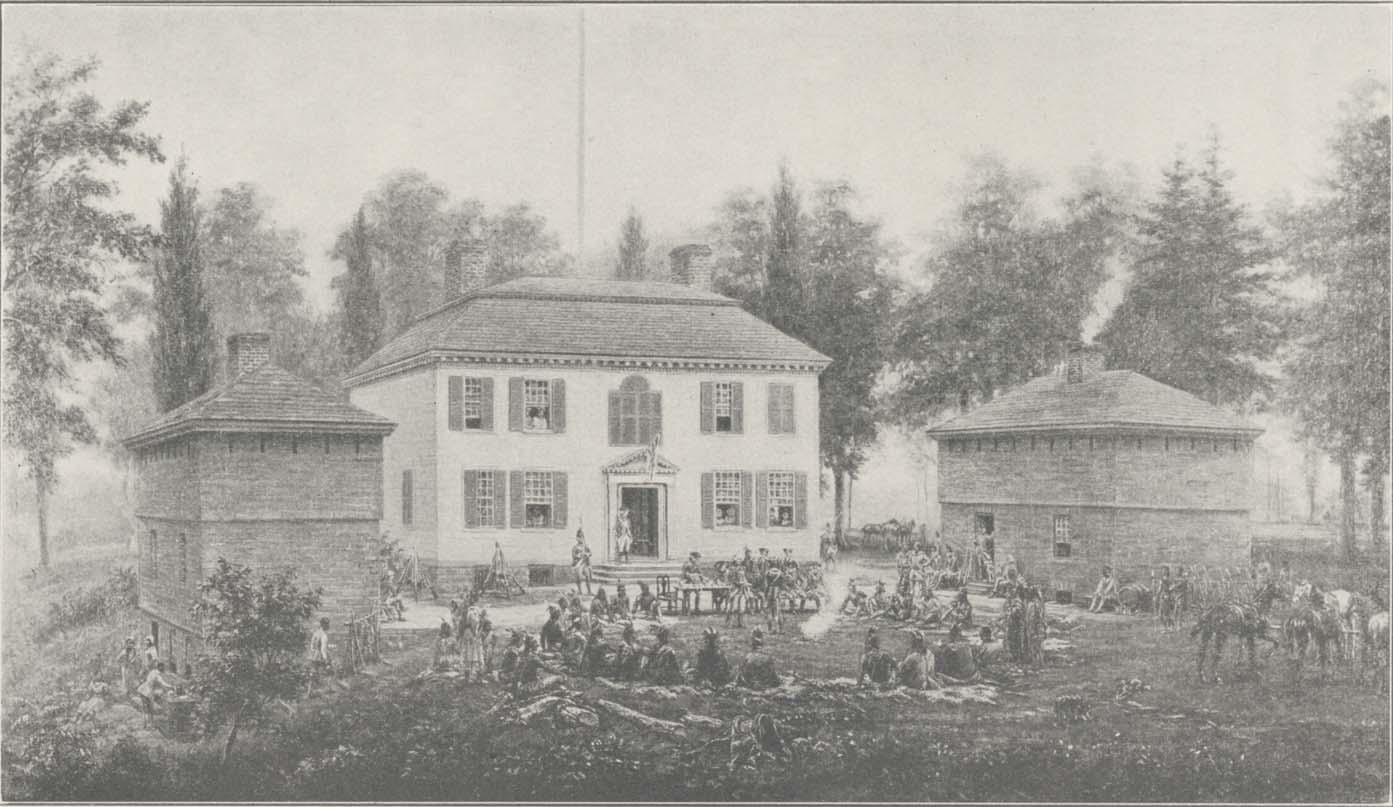
Schenectady County Public Library
Joseph Totten and Stephen Crossfield were shipwrights in New York who served as proxies for a massive deal in 1771 for over one million acres of land. Precisely who was behind the deal remains a mystery, but it was consummated with much fanfare at Johnson Hall in July 1771 in the presence of Governor William Tryon and the principal Mohawk chiefs. At that time £1100 was paid to dispose of Indian claims, but it remained for the Totten and Crossfield concern to pay the requisite fees (and bribes) to the Crown to actually acquire title to the land. Obvious land grabs such as this rankled many and when the constitution for the State of the New York was formulated amidst the Revolution in 1777, it contained an article (XXXVII) that explicitly invalidated the “frauds too often practiced” against Indians in contracts and invested the legislature of the State with the authority to validate purchases.
In practice this meant little as men of power and means were simply able to bend the New York legislature to their will. The Congress of the Confederation attempted to prohibit the ongoing violation of aboriginal title by the states in 1783, but the State of New York simply ignored the requirements. Indeed, it is hardly surprising to note that Joshua Mersereau (1733-1804), who was a lawyer and prominent patriot who had served as Quartermaster-General of the Continental Army, was also a member of the legislature in 1786. Mersereau lived in Otsego County, which is some distance from the land that was purchased, which suggests that this was simply a speculative venture in an area that was only just being settled.
The letters patent is a large (17″ x 12″) piece of parchment and printed form that was subsequently filled out with the necessary details using pen and ink. The bottom edge was folded back over so that the ribbon attached firmly to the document, where it was also signed by Governor Geo. Clinton.
The seal itself was just a piece of beeswax that was covered with parchment and then embossed with a brass matrix using a hand press. The result was a seal of rather simplistic design measuring 3 1/2″ in diameter and about 1/2″ thick. The seal was devised by committee and codified in Chapter 112 of the Laws of 1778 as:
A rising sun; motto, Excelsior ; legend, The Great Seal of the State of New York. On the reverse a rock in the ocean ; legend Frustra.
The reverse is presumed to have been an allusion to the fact that the State of New York was standing firm as it was besieged by the British in 1777-78. The seal aptly demonstrates how the rebellious Americans aspired to create a new and ‘loftier’ way forward, hence the ‘excelsior’ motto. But they also continued many British traditions as the state seal was in effect simply a replacement for the Crown Seal of a now-discredited king.
The practice of using a seal or emblem to create an impression that validated a document or the contents of some container extends into antiquity. The study of such seals as a source of historical information is known as sigillography. The ANS holds a wide array of seals, which due to some linguistic imprecision, refers to both the device used to make an impression and to the impression thus made. Pendent seals came into vogue in the West during the eighteenth century, but prior to that a range of device were used across different cultures, from signet rings to cylinder seals.

One of our largest collections of materials in this vein are scarab seals. This specimen is a Phoenician one dating to roughly the 5th century BCE. Amulets and seals in the form of scarab beetles were popular in Ancient Egypt, and this device reflects something of the cross-cultural influences that the broad maritime commercial trading network maintained by the Phoenicians in the Eastern Mediterranean allowed for. There is a tripartite division to the matrix with eagles above and below a line of letters from the famed Phoenician alphabet, from which modern Arabic script derives. The design has been incised on the flat face of a small piece of marble so that it creates a reverse impression in relief on whatever material was being imprinted.
This post marks my first foray into sigillography and one that I hope has illuminated something of the legal, symbolic, and political process by which land was acquired and disposed of in the colony-cum-state of New York. I have also included a full transcription of the document below the fold with the printed sections in bold and the handwritten passages in italics.
Sources: Calendar of N.Y. Colonial Manuscripts (1864); Alfred Lee Donaldlson, A History of the Adirondacks, Vol. I (1921); Dominque Collon, ed., 7000 Years of Seals (1994).
TRANSCRIPTION OF NEW-YORK LETTERS PATENT (ANS 1884.24.11)
The People of the State of New York, by Grace of God, Free and Independent:
To All to whom there Presents shall come, Greeting: Know Ye, That we have Given, Granted and Confirmed, and by these Presents, Do Give, Grant and Confirm, unto Joshua Mersereau all that certain Tract of Land situate in the county of Montgomery – being part of the Indian purchase made by Edward and Ebenezer Jessup and their associates under License granted to the Totten and Crossfield and known and distinguished in a Division of the said purchase into townships by being part of Township Number Thirty-one, Beginning at the most Westerly corner of Township number Twenty Nine, and running thence North thirty degrees West, two hundred and sixty two chains and fifty links, then North sixty degrees East two hundred chains, then South thirty degrees East eighty chains, then North sixty degrees East forty chains, then South sixty degrees West two hundred and forty chains to the place of Beginning: All which courses are rum as the needle pointed in the year one thousand and seven hundred and seventy two Containing five thousand and nine hundred and eighty acres.
Together with all and singular Rights, Hereditaments and Appurtenances to the same belonging, or in any Wise appertaining, Excepting and Reserving to ourselves, all Gold and Silver Mines, and five Acres of every Hundred Acres of the said Tract of Land for Highways. To Have and To Hold the above described and granted Premises unto the said Joshua Mersereau his Heirs and Assigns, as good and indefensible Estate of inheritance, for ever. On Condition Nevertheless, That with the Term of seven Years to be computed from the first Day of January never ensuing the Date hereof, there shall be one actual Settlement made on the said Tract of Land hereby granted – For every Six hundred and Forty acres thereof – otherwise these our Letters Patent, and the Estate hereby granted, shall cease, determine and become void. In Testimony Whereof, We have caused these our Letters to be made patent, and the Great Seal of our said State to be be hereunto affixed. Witness Our truly and well-beloved George Clinton, Esquire, Governor of our said State, General and Commander in Chief of all the Militia, and Admiral of the Navy of the same, at our City of New-York, this Eighteenth Day of July in the year of our Lord One Thousand Sever Hundred and Eighty Six, and in the Eleventh Year of our Independence.
Approved by the Commissioners of the Land-Office, and passed
the Secretary’s Office, the 10th Day of July 1786
***illegible signature***
Signature of Governor Geo. Clinton above seal.


